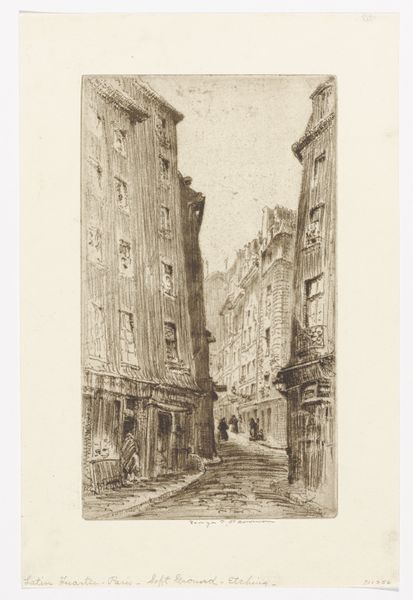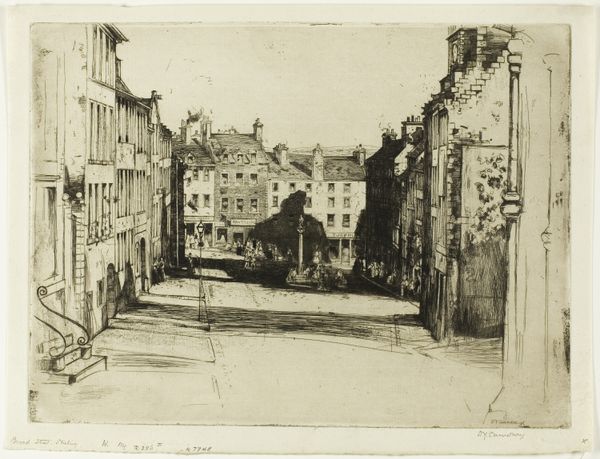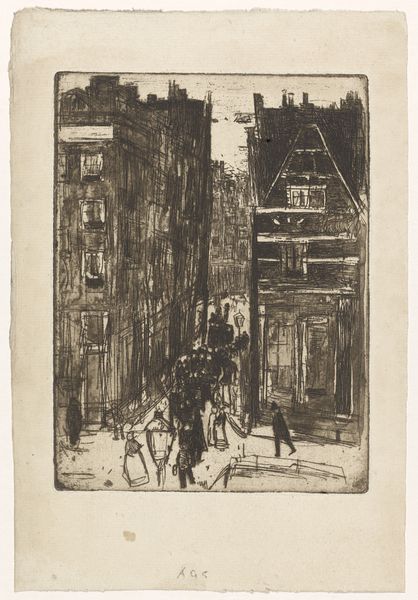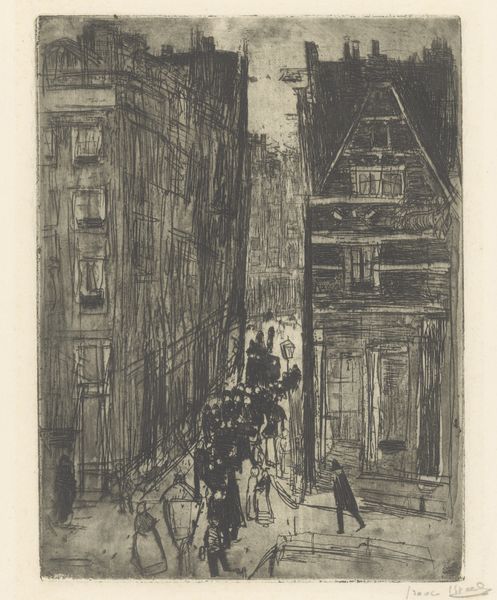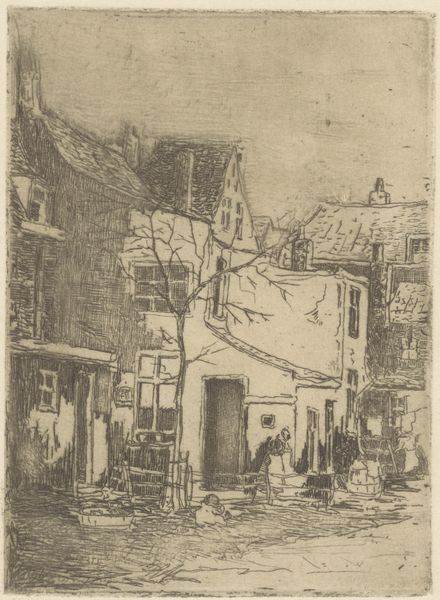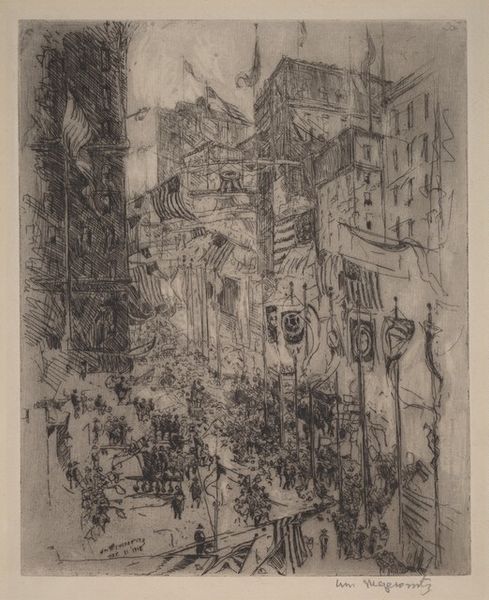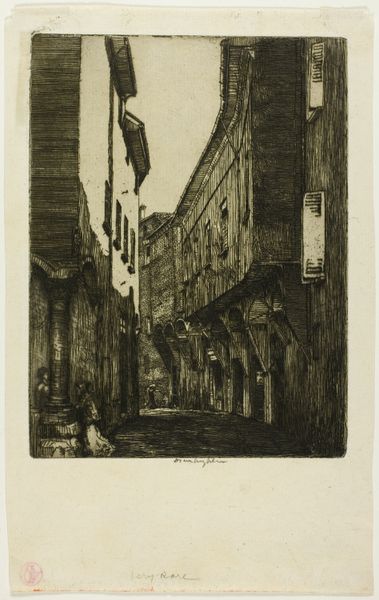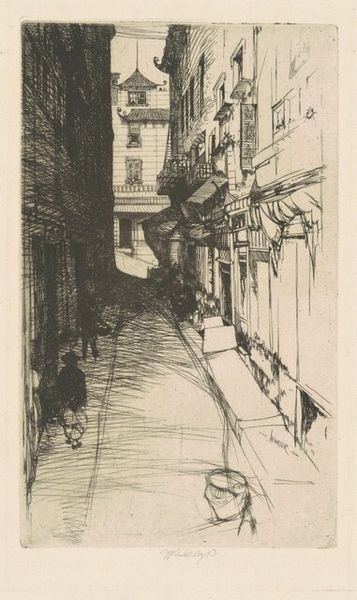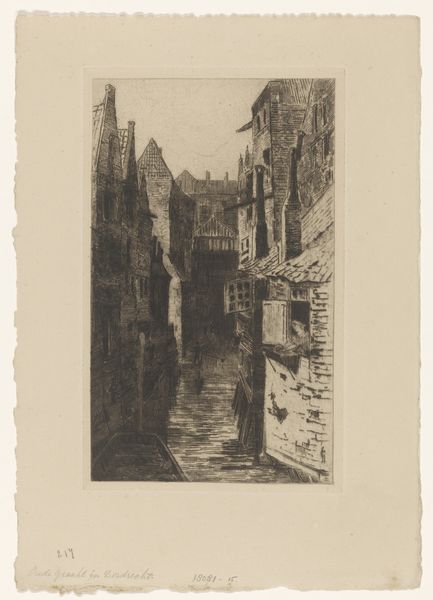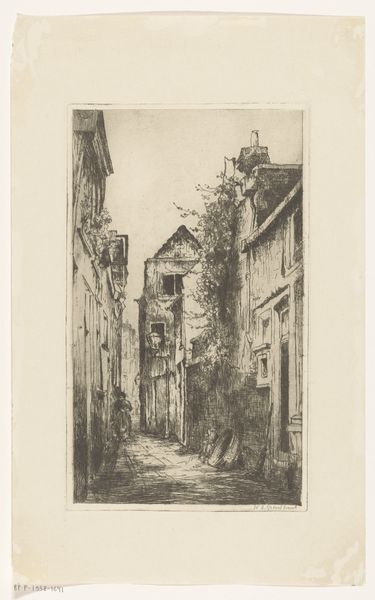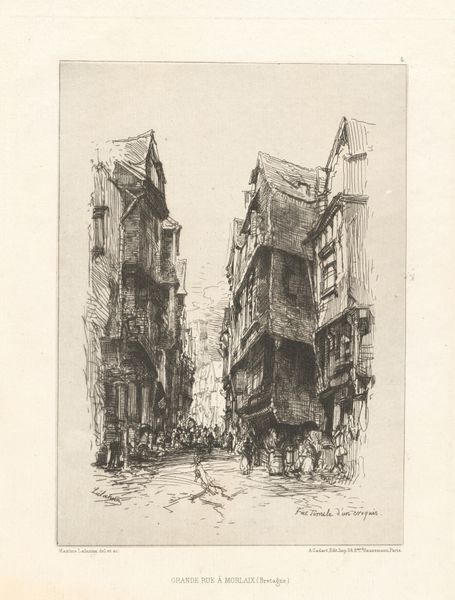
Dimensions: 230 × 170 mm (image); 239 × 178 mm (plate); 281 × 205 mm (sheet)
Copyright: Public Domain
Editor: This is Gustave Leheutre's "The Rue Domat, Paris," an etching on paper from 1904, currently residing at the Art Institute of Chicago. It strikes me as a really intimate look at daily Parisian life, but it feels almost unfinished with all the expressive line work. What catches your eye about the composition? Curator: The composition presents a study in contrasts. Note the stark differentiation of tones—dark, dense clusters of lines giving way to areas nearly devoid of mark. Observe how the buildings themselves seem to both solidify and dissolve due to this varied texture. Is the subject matter secondary to the very act of marking? Editor: I think so! It's like the city is built from these chaotic lines, almost like a sketch come to life. The textures created by the etching feel so tactile; you can almost feel the grit of the street. Does the dynamism have some bearing on the movement, from Impressionism perhaps? Curator: Precisely. We observe that Leheutre is deeply concerned with surface and its construction. The medium itself—the etched line, its directionality, its density—becomes paramount. Do you agree that it reflects upon a period of innovation in how the city was rendered? Editor: Definitely. Focusing on line, shadow, and form shifts the emphasis away from merely documenting Paris and places it instead upon the artist's hand and, therefore, vision. Thanks for shifting my focus in thinking about the piece. Curator: An insightful perspective indeed. My pleasure. Reflecting on this further will offer you much greater comprehension.
Comments
No comments
Be the first to comment and join the conversation on the ultimate creative platform.
